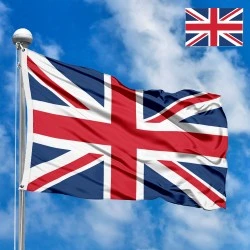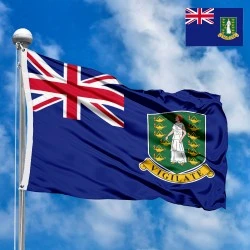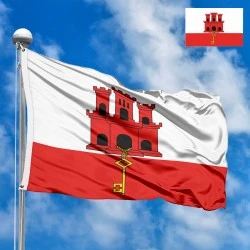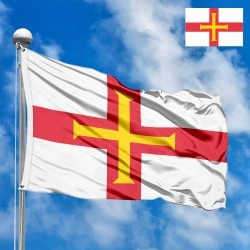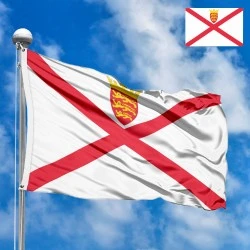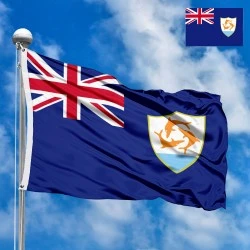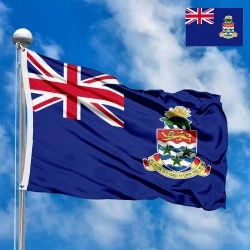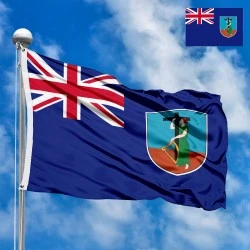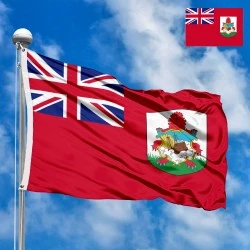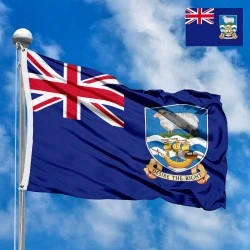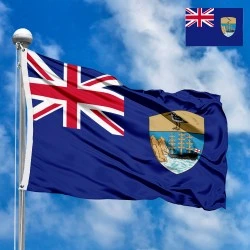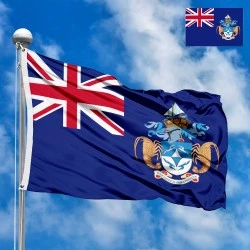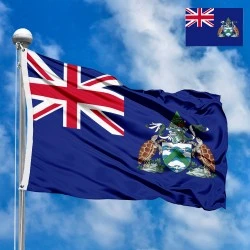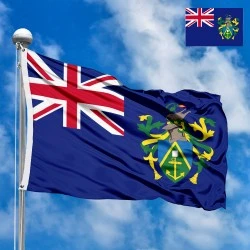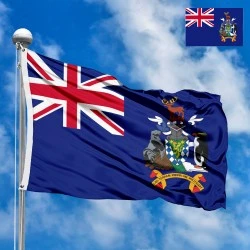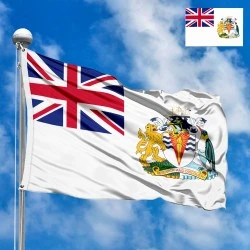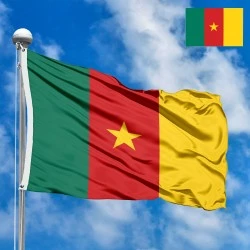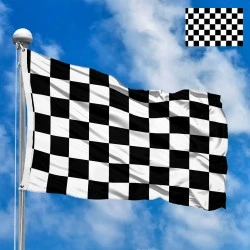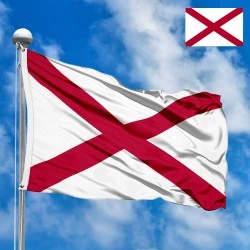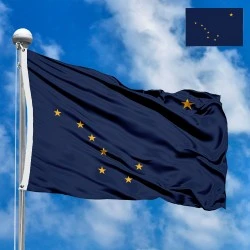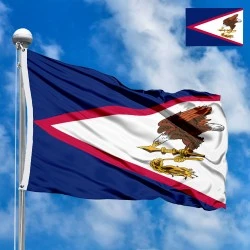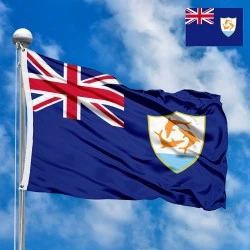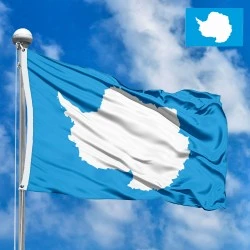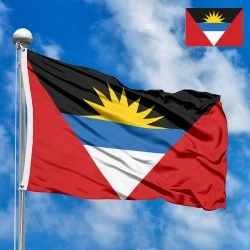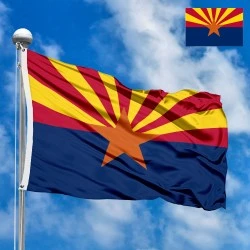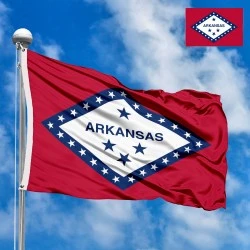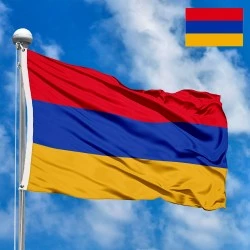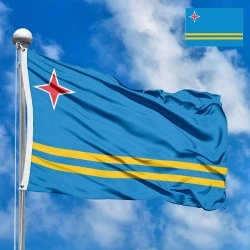Flag of Sark
- Flag Type: Regional
- Proportions (official): 1:2
- Official name: Sark
- Sovereignty (year): NO (Part of the Bailiwick of Guernsey)
- Country code, territory: GG, GGY, 831
- Population: ~500 (2024, Gov. of Guernsey)
- Religions: Predominantly Christian
- Area (km²): 5,45
- Highest point: Le Moulin (114 m)
- Lowest point: Ärmelkanal (0 m)
- Currency: Pound sterling (GBP, £) / Guernsey Pound (GGP, £)
- Languages: English, Sercquiais (Sarkese)
- Dialing code: +44
- National domain: .gg
Flag Information
General information
Demography and Culture
Economy and communications
- All Flags
- Flags of Countries by Continent
-
Flags of Organizations
- Flags of UN countries
- Flags of the European Union countries
- Flags of NATO countries
- Flags of the countries of the Organization of Islamic Cooperation
- Flags of the countries of the Organization of American States
- Flags of the Arab League countries
- Flags of the African Union countries
- Flags of the countries of the Union of South American Nations
- Flags of the Commonwealth of Nations
- Flags of the countries of the Secretariat of the Pacific Community
- Flags of the Nordic Council countries
- Flags of the Caribbean Community
- Flags of the countries of the Association of Southeast Asian Nations
- Flags of the East African Community
- Flags of the countries of the Organization of Turkic States
- LGBT Community Flags
- Historical Flags
- Ethnic Flags
- Flags of the USA (states)
Description
The flag of Sark features a white field with a red St. George's Cross, traditionally associated with England. In the canton (upper hoist corner) of the flag, on a red field, are two golden lions passant guardant, positioned one above the other. These lions are directly borrowed from the coat of arms of Normandy, emphasizing Sark's historical belonging to this Duchy.
-
White Background: The white color of the field is traditional for many flags, symbolizing purity, peace, and simplicity. In the context of the Sark flag, it serves as a neutral base to highlight other, more significant elements.
-
Red St. George's Cross: This cross, extending across the entire field, is a symbol of Saint George, the patron saint of England. Its presence on the Sark flag underscores the island's close historical and political ties with the United Kingdom, being part of the British Crown's possessions, though not directly part of the UK itself. The red color of the cross symbolizes courage, valor, and sacrifice.
-
Red Canton with Two Golden Lions Passant Guardant: This element is the most distinctive and historically significant.
-
Red Field of the Canton: The red color in the canton repeats the color of the cross, creating visual unity and reinforcing the symbolism of passion and strength.
-
Two Golden Lions Passant Guardant: These heraldic figures, golden lions depicted walking and looking straight ahead, are the central element of the coat of arms of Normandy. Their presence on the Sark flag directly points to the island's historical heritage as part of the Duchy of Normandy. The yellow (gold) color of the lions symbolizes nobility, wealth, and prosperity. An interesting feature is that, unlike classic depictions, the lions on the Sark flag are often shown partially extending beyond the canton and overlapping the red cross. This might be a stylistic choice designed initially or an interpretation emphasizing the uniqueness of the Sark version.
-
Size and Proportions
The official proportions of the Sark flag are 3:5 (height to length), although other variations, such as 1:2, exist depending on the manufacturer or purpose of use. The elements of the flag, such as the St. George's Cross and the canton with the lions, are arranged to ensure their clear and recognizable representation. The exact sizes of the lions and their position relative to the cross may vary slightly in different artistic interpretations, but the overall composition remains consistent.
History of the Flag's Creation
The history of the Sark flag dates back to 1938 when Dame Sybil Hathaway, then the Dame of Sark (Seigneur), approached artist and heraldist Herbert Pitt with a request to design a unique flag for the island. Prior to this, Sark did not have its own official flag, presumably using symbols of the British Crown or unofficial local insignia.
Herbert Pitt, a member of the then "Flag Circle," designed a flag that deliberately combined English and Norman elements. He described the flag as: "On a White Field, the Red cross of St George. The 1st Quarter 'Gules, 2 lions-leopards passant guardant Or' (Normandy Ancient). The lion in base impinging on the dexter arm of the Cross." This design was adopted as the personal standard of the Seigneur of Sark and subsequently became the de facto flag of the island.
Notably, Dame Sybil Hathaway later claimed to the Flag Institute that this flag had been in use for "at least 200 years," which was likely a romanticized assertion aimed at giving the flag a more ancient history and legitimacy. Modern research indicates that the flag indeed dates from 1938 and was created at her request.
In 1987, when Sark was invited to participate in the Island Games, there was a need for an official flag to represent the island. In its absence, Seigneur Michael Beaumont (Dame Sybil's son) granted permission for the "Seigneur's flag" to be used as the de facto flag of Sark. It was only in 2020 that this design was officially approved and granted as the official flag of Sark, solidifying its status.
Country and Region
Sark (French: Serq, Sercquiais: Sèr/Cerq) is a small island located in the English Channel, off the coast of Normandy, France. It is one of the Channel Islands, which, in turn, are Crown Dependencies of the United Kingdom. It is important to note that the Channel Islands, including Sark, are not part of the United Kingdom and are not members of the European Union. They are self-governing territories with a unique constitutional status, directly accountable to the British Crown.
Sark belongs to the Bailiwick of Guernsey, which also includes the islands of Guernsey, Alderney, Herm, and several smaller islets. Sark consists of two main parts – Great Sark and Little Sark, connected by a narrow isthmus known as La Coupée.
Until recently, Sark was known as the last feudal state in Europe, where a system of government based on 16th-century feudal principles existed. This system was reformed in 2008 when the island transitioned to a more democratic rule, although some elements of its unique status persist. Sark's population is small, around 500-600 people. The island is known for its tranquil way of life, the absence of cars (only tractors and horse-drawn carriages are permitted), and its status as a "Dark Sky Island," ideal for astronomical observations.
Interesting Facts
-
Last Feudal Island: Until the 2008 reforms, Sark was known as the last feudal dominion in Western Europe. Its system of government, based on a grant from Queen Elizabeth I in 1565, retained many medieval characteristics, including the feudal transfer of land.
-
Two Lions, Not Three: Unlike Guernsey and Jersey, whose flags feature three Norman lions, the flag of Sark displays only two. This might be due to Sark being a smaller island or its status always being subordinate to Guernsey.
-
Unusual Lion Placement: A characteristic feature of the Sark flag is that the golden lions in the canton partially extend beyond the red field and overlap the white background and the red cross. This gives the flag a unique visual effect and distinguishes it from other flags with Norman lions.
-
Car-Free Island: Personal cars are banned on Sark, making it a unique place in terms of transport. The primary modes of travel are bicycles, horse-drawn carriages, and tractors. This contributes to the preservation of its natural beauty and tranquility.
-
Dark Sky Island: In 2011, Sark was officially recognized as an International Dark Sky Community, becoming the first in Europe and the first island globally to receive such status. This is due to the lack of artificial lighting, which provides an incredibly clear night sky for stargazing.
-
Unique Crown Dependency Status: Sark, like other Channel Islands, is not part of the United Kingdom but falls under the direct jurisdiction of the British Crown. This means it has its own legislation, tax system, and governing bodies, but its defense and external relations are provided by the UK.
-
Sercquiais (Sarkese): A unique Norman dialect called Sercquiais, or Sarkese, is still spoken on Sark. Although English is the main language, Sercquiais remains an important part of the island's cultural heritage.
Adoption and Significance for Inhabitants
The official adoption of the Sark flag in 2020 was an important step in formalizing its unique identity. Prior to this, the flag had been used as a de facto symbol, but its official status gives it additional legitimacy and international recognition.
For the inhabitants of Sark, this flag holds deep and multifaceted significance:
-
Symbol of Identity and Uniqueness: The flag embodies the unique history, culture, and way of life of Sark. It recalls its feudal past, special status, and distinctions from other regions.
-
Connection to Norman and English Heritage: The duality of the symbolism – the St. George's Cross and the Norman lions – reflects the island's historical connection to both England and the Duchy of Normandy. This emphasizes the island's cultural richness and complex historical fate.
-
Sense of Belonging: The flag serves as a powerful symbol of unity and belonging for the small community of Sark. It fosters a sense of shared identity and pride in their unique home.
-
Reflection of Independence and Self-Governance: Although Sark is a Crown Dependency, the flag symbolizes its significant degree of self-governance and its ability to make its own decisions, which is particularly relevant after the democratic reforms of 2008.
-
Attracting Attention: The flag's unique design and history draw attention to Sark, helping to preserve its cultural heritage and attract tourists interested in its special atmosphere.
Overall, the flag of Sark is more than just a heraldic emblem; it is a living history, a symbol of resilience, uniqueness, and pride for a small community that continues to preserve its traditions and unique way of life in the modern world.
In the demonstration images, full-size flags are shown with proportions of 2:3, and hand-held flags with proportions of 1:2.
Donation
Download
Completely free for commercial and non-commercial use (public domain).
You can freely use them in your news magazines, websites, software, mobile applications.
We appreciate a backlink to https://flagssite.com
Raster files - Flag of Sark (PNG, JPG)
 Waving flag
Waving flag
- PNG format (transparent background), 72dpi, dimensions in Pixels (px), aspect ratio 3:4.
- 15х20 px
- 30х40 px
- 60х80 px
- 120x160 px
- 240x320 px
 Sizes:
Sizes:
"v15" - image size (by height); if necessary, replace with available: v15, v30, v60, v120, v240.
!!! For resizing, use the Latin (eng) keyboard layout.
<img src="https://flagssite.com/flags/v15/20257.png" alt="Flag of Sark">
 Round flag
Round flag
- PNG format (transparent background), 72dpi, dimensions in Pixels (px), aspect ratio 1:1.
"d15" - image size (diameter); if necessary, replace with available: d15, d30, d60, d120, d240.
!!! For resizing, use the Latin (eng) keyboard layout.
<img src="https://flagssite.com/flags/d15/20257.png" alt="Flag of Sark">
 Rectangular flag 2:3
Rectangular flag 2:3
- JPG format, 72dpi, dimensions in Pixels (px), aspect ratio 2:3.
"h30" - image size (by height); if necessary, replace with available: h15, h30, h60, h120, h240, h360, h480.
!!! For resizing, use the Latin (eng) keyboard layout.
<img src="https://flagssite.com/flags/h30/20257.jpg" alt="Flag of Sark">

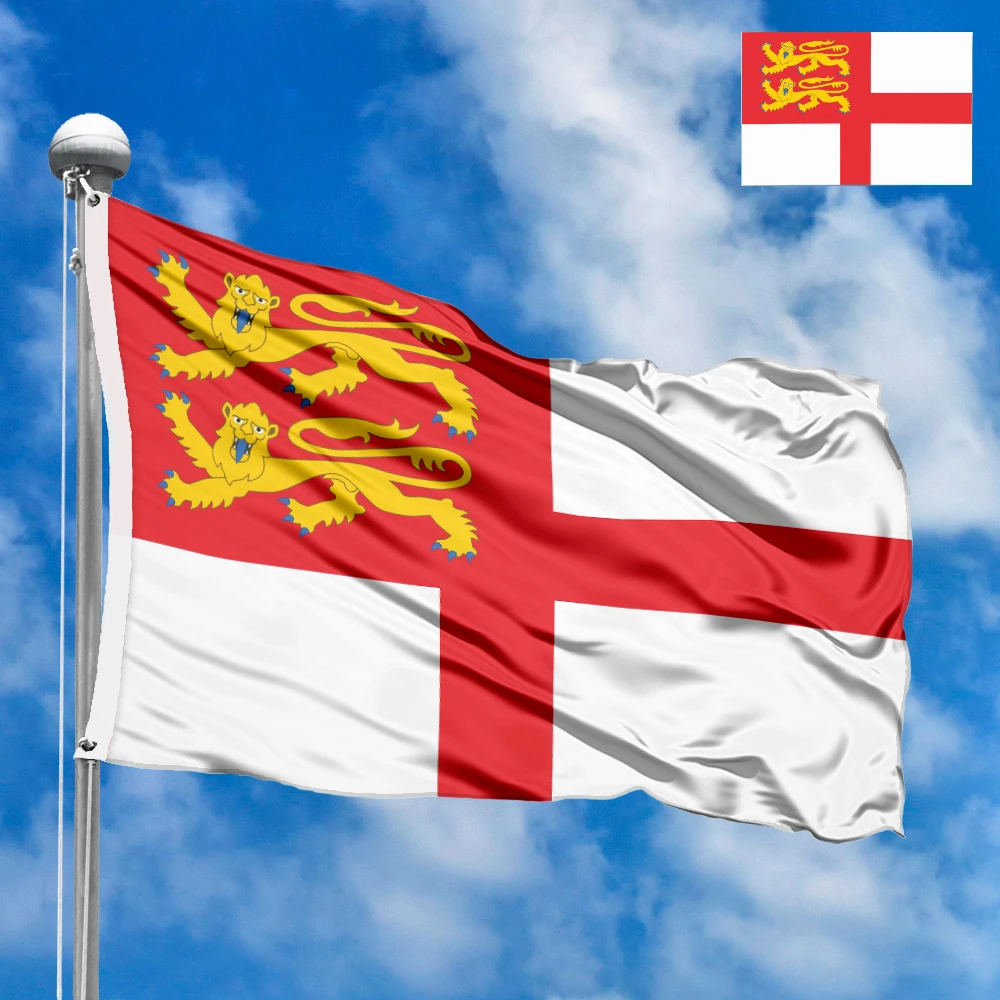
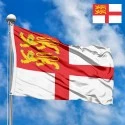
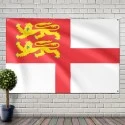
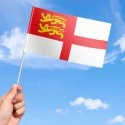

 Sizes:
Sizes:
 Sizes:
Sizes:
